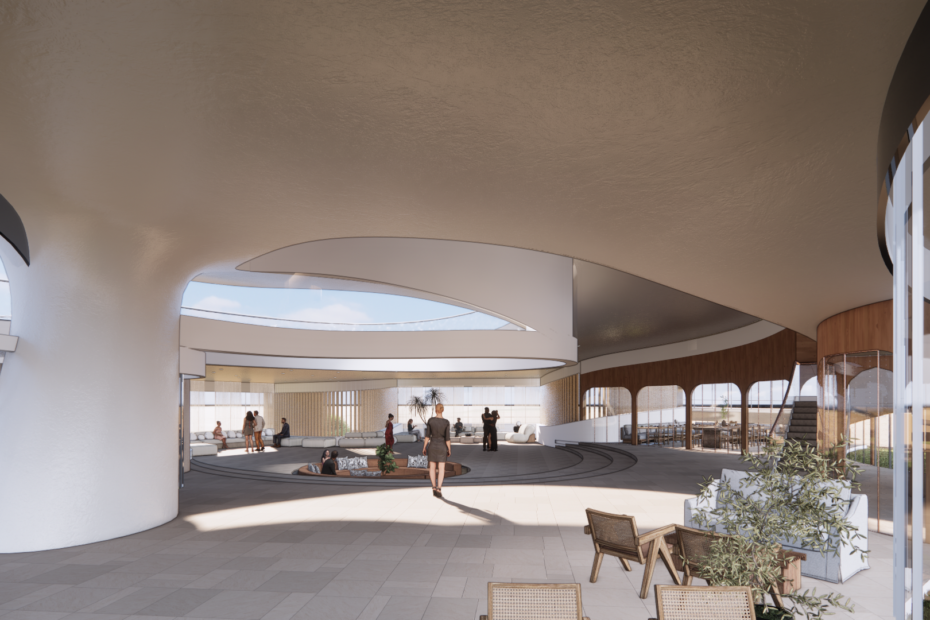What were the historical trends of architecture in Saudi Arabia, and how did they influence the growth of the Kingdom? An architectural style is essentially a collection of traits and qualities that enable us to quickly identify any building/architectural project.
The Saudi architectural aesthetic presently serves as an artistic and expressive medium and reflects the societal ideas of earlier eras. Every country in the globe also has a unique collection of architectural styles that set it apart from other countries.
These patterns resulted from the reality of regional and climatic differences among them, as well as the reality of the various external and internal variables impacting these patterns. No matter how dissimilar these patterns were, they are all connected by the enduring characteristics of Islamic principles and regional traditions.
Modern Architecture in Saudi Arabia
In Saudi Arabia, modern architecture is frequently criticized in publications including architectural books, specialized journals, and local newspapers. This criticism focuses on the fact that modern architecture is an imported style that is very different from “Islamic architecture,” and that it does not fit with the Kingdom’s hot desert environment. Also, it caused the extinction of traditional architectural styles and resulted in the loss of the Kingdom’s architectural identity.
Contemporary architecture is a period in architecture with a trend that consists of a collection of schools and architectural styles that share some common traits. These characteristics primarily include the simplification of forms and the rejection of ornamentation, which runs counter to the original Islamic architectural methods and subjected them to harsh criticism in the Kingdom of Saudi Arabia. Nevertheless, its significance lies in serving as a means of communication with the outside world. All industrialized nations throughout the world have modern architecture. Therefore let’s discover some instances of it in the Kingdom of Saudi Arabia together.
Islamic architecture now
In terms of architectural practice, the landscape has been slightly harmed. The first was in the second half of the nineteenth century.
Westerners have traveled to several important Islamic capitals, including Cairo, and Istanbul, and smaller cities like Damascus, and Bukhara.
These architects were employed by the colonial powers or the burgeoning international merchant class, depending on where they lived. Some of them adopted the new European design trends, including neoclassical and neo-baroque designs, Art Nouveau, Art Deco, and even modernist designs, presumably to demonstrate their modernity. And, more significantly, to demonstrate their masters’ modernity and ability to keep up with the times.
Others have made an effort to incorporate old buildings into their designs as a way to convey the culture and history of the locations where they are working. They used a variety of historical architectural traditions, some of which were Islamic and some of which predated Islam, to attain this purpose by appropriating architectural and decorative features from them and incorporating them into a set of neo-styles:
There are the neo-Mamluk, neo-Maghreb, neo-Islamic (or Hindu-Saracenic), neo-Pharaonic, neo-Sasanian, and neo-Hittite civilizations (relative to the Hittites).
However, these architects believed that these architectural traditions. Particularly Islamic architecture, was outmoded since they were not intended to enter the modern period in any form. This view was shared by the researchers with whom they were in contact. Before incorporating any of its formal or spatial components into the references of the designs of the new approaches. They had to document, examine, and categorize it.
The Beaux-Arts architecture of Greece and Rome, in particular, was a model for this architectural study technique. The only real distinction between the resulting “Revival” styles. And those created by Western Revival architects may have been the use of “Islamic” references.
Saudi Arabian postmodern construction
The articulation of an ideology that regarded “Islam” as an identity was the next great historical change in the area of Islamic architecture.
This misunderstood and still-developing process was sparked by at least two different, but mutually exclusive, economic, historical, and political factors.
The first phenomenon was the rebirth of various Islamic political movements in the majority of Islamic countries in the 1970s of the previous century, following a period of seeming stagnation of around thirty years.
Following the success of the Islamic Revolution in Iran in 1979, Islamic political parties tried to revert, as they assert, to the more genuine pillars of Islamic nationalism.
These movements were perceived as a response to nation-states’ shortcomings in the face of outside influence and moral decay. These political organizations strangely overlooked the conceptual aspects of architecture. Particularly religious buildings built in the name of Islamic architecture. Despite their vehement attacks on what they perceived as corruption in all Western cultural imports.
The work of the architects who embraced postmodern exuberance to create raucous formal compositions was the most diverse. The enormous structures built by the main international firms present in the Gulf region served as the trend’s crowning achievement.
INJ Architects is an award-winning consultant office with high-end architecture and sustainability approach in the Kingdom of Saudi Arabia. It has completed several research and architecture projects, some of which have won international competitions. These projects serve as great examples of what this article is about, modern architecture. Visit this link to learn more about INJ Architects’ unique projects.

